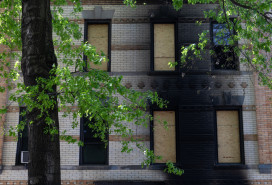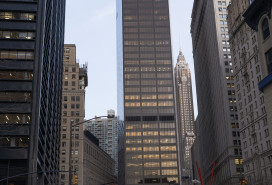10 things you don’t want to see in the board minutes

When you buy a co-op or condo, you’re also buying into a building. Is it financially healthy? Physically fit? Are there any quality of life issues that could diminish the enjoyment of your new home?
A review of the financial statements by your accountant or attorney will only take you so far. An essential place to look for clues to the bigger picture is the board minutes--the recorded notes of the issues discussed at monthly board meetings.
The minutes are typically available for review in the building’s managing agent’s office—and reviewing the past two years worth of minutes is an essential task of any real estate attorney.
Here are 10 red flags that require more information before going ahead with the deal:
1. There are no minutes
A few buildings--particularly small, self-managed ones – have boards that may not meet at all or often enough to keep a record of their minutes. This isn’t necessarily a sign of mismanagement but the lack of transparency means that a more active due diligence process is required, such as interviewing board members and asking them the questions you would typically glean from the record.
2. Proposed increases in maintenance or common charge
Your attorney should look into the reason for the proposed increase and the amount. Is the building well managed? How severe is the increase? (Besides being a drain on your finances, it will take a toll on resale values.)
3. Problems with building systems (electrical, plumbing, etc.)
These raise both quality of life concerns and financial ones. More information is needed about the scope of the issues and the potential cost to repair.
4. Reserve fund depletion
Generally speaking, reserves for a co-op or condo should be in the amount of about $2,000 - $3,000 per unit
5. Problems with management
Living in a poorly managed building can be frustrating and expensive. Your attorney should take note of persistent complaints about the way the building is being managed or the responsiveness of the managing agent or building staff.
6. Noise complaints
More information may be needed. Is it a noisy neighbor and if so where is the problem located in the building? Or is the noise problem symptomatic of paper thin walls?
7. Bed bugs and mold
Neither is a necessarily cause to walk away, but your attorney should find out how recently the problems occurred, how were they treated or remediated, and how widespread the problem was.
8. Difficult sponsors
Be alert for indications of a fractious relationship with the sponsor. Signs include failure to pay maintenance, common charges or taxes for unsold units; failure to cooperate with requests from the board; failure to complete any outstanding obligations the sponsor may have under the original plan (i.e., in a new development, obtaining a permanent certificate of occupancy , and litigation against the sponsor).
9. Lawsuits
Your lawyer should find out the names of the litigants, pull up the public records and review them carefully. There is clearly a difference between an occupant suing the board because of the board’s failure to repair damage caused by a leak , which really only affects that specific unit, as opposed to a group of unit owners suing the board for mismanagement of funds, which affects all owners. He or she should also determine whether insurance is adequate to cover litigation costs.
10. Turndown ratio
Not all boards record their decision to turn down a potential purchaser, but some do. Three or four turndowns in two years is a lot, and may indicate an unusually strict board. That could impact your chances, and, potentially, depress sales prices if the building acquires a reputation for turndowns.
Sandor D. Krauss is the founding partner of SDK, a New York City real estate law firm specializing in residential and commercial real estate transactions.
2 ways to lose your contract deposit when you least expect it

























